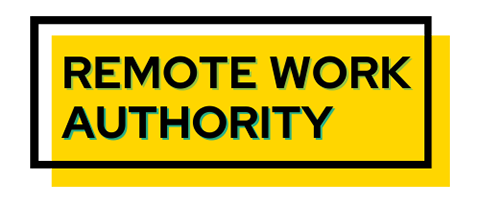Managing remote or distributed teams is challenging as interactions are virtual and not usually in person, even with hybrid teams. Managers must use the tools they have in place to communicate goals, expectations, and feedback clearly with staff.
Managing remote or distributed teams has become increasingly popular recently as more companies adopt flexible work arrangements. While having a remote team has many benefits, unique challenges come with this work arrangement. However, with the right strategies and tools, managing a remote team can be as successful as managing an in-person group.
Distributed teams have no physical office and have team members working from various locations. Remote teams may have some people working from an office, while other team members work from home or another location. Both teams are considered remote, but not all remote teams are distributed. Many of the dynamics of managing them are similar.
This article explores the best remote or distributed team management practices, including communication, collaboration, and team-building tips. Whether new to managing a remote team or looking to improve your current practices, this article will provide valuable insights and practical advice.
Table of Contents
What Are The Benefits Of Having A Distributed Team?
Many team member and organizational benefits come from establishing a remote or distributed team, such as increased productivity and reduced overhead costs:
Firstly, it allows organizations to access a wider talent pool beyond their geographic location, resulting in a more diverse and skilled workforce.
Secondly, it reduces overhead costs associated with maintaining a physical office, such as rent, utilities, and supplies.
Thirdly, it offers employees greater flexibility and work-life balance, as they can work from anywhere with an internet connection and manage their schedules more effectively.
Fourthly, it can increase productivity, as employees are often more focused and work without distractions in their preferred work environment.
Finally, it can reduce the organization’s carbon footprint, as employees no longer need to commute to a physical office, leading to a more sustainable work arrangement.
What Are The Challenges?
Communication is one of the biggest challenges, as team members may be spread out across different time zones and locations. This distance can make it difficult to coordinate projects, collaborate effectively, and ensure everyone is on the same page.
Another challenge is maintaining team morale and cohesion, as remote workers may feel isolated and disconnected from their colleagues. It can also be difficult to provide feedback and support to team members when you’re not physically present.
How Do You Manage Distributed Or Remote Teams Virtually?
Managing remote teams virtually requires a different approach compared to managing in-person teams. These tips will help you manage your remote team effectively:
- Establish clear expectations and guidelines for communication, collaboration, and work schedules. This will ensure everyone is working towards the same goals.
- Use the right tools and technology to facilitate communication and collaboration, such as video conferencing, instant messaging, and project management software.
- Schedule regular check-ins and team meetings to maintain team cohesion and ensure everyone is aligned and progressing towards their goals.
- Provide feedback and recognition to your team members to motivate and engage them. Regular performance evaluations and one-on-one meetings can help identify areas for improvement and recognize accomplishments.
- Encourage team-building activities and social interactions to build a strong team dynamic and foster a sense of community among your remote team. This can include virtual coffee breaks, online games, and team-building exercises.
Are There Any Differences Between Managing Remote Or Distributed Teams?
Managing a distributed team and a remote team with hybrid workers can differ.
A distributed team typically refers to a team where all members work remotely, often in different locations or time zones, and may never meet in person. This makes managing communication and team cohesion more challenging,
In contrast, a remote team with hybrid workers typically has some team members who work in an office or physical location while others work remotely. Managing a remote team with hybrid workers can require more coordination and communication to ensure that all team members feel included and connected.
In a hybrid team, it’s essential to establish clear guidelines and expectations for communication, collaboration, and work schedules to ensure everyone is on the same page. Whereas distributed team workers might be able to set their own hours, remote teams or hybrid workers tend to have similar hours so they can collaborate in real-time.
Managing communication and team cohesion can be more challenging in a distributed team. However, with the right tools and strategies, creating a strong team dynamic and achieving success is still possible.


What Is The Best Way To Manage Virtual And Dispersed Teams?
The best way to manage virtual and dispersed teams is to adopt a proactive approach emphasizing communication, collaboration, and team building. These key strategies will help you manage your virtual and dispersed teams effectively:
How Do You Manage Distributed Teams In Agile?
Managing distributed teams in an agile environment and keeping them productive, collaborative, and focused is challenging. These tips will help you lead distributed teams in an agile environment:
- Use agile methodologies and frameworks, such as Scrum or Kanban, to ensure your team is working in a structured, iterative way.
- Use video conferencing or project management collaboration tools to facilitate communication and collaboration among team members.
- Encourage sprint retrospectives to ensure everyone is aligned toward the same goals.
- Establish a culture of transparency and accountability, where team members feel empowered to take ownership of their work and contribute to the team’s success.
- Promote collaboration and innovation.

What Are The Best Tips For Managing Distributed And Remote Teams?
Here are the five best tips for managing distributed and remote teams effectively:
- Set up regular check-ins and team meetings. Use communication channel tools such as instant messaging (like Slack), video conferencing (like Zoom or Microsoft Teams), and email to keep everyone connected and aligned.
- Use project management software, document-sharing platforms, and other collaboration tools to streamline workflows and ensure everyone can access the necessary information.
- Give your team members regular feedback on their work and recognize their accomplishments. Honesty and openness motivate and engage staff, even when working remotely.
- Encourage open communication, and be transparent about team goals, priorities, and challenges. This accessibility builds a sense of confidence and accountability among team members.
- Create opportunities for your team members to connect and build relationships, even if they are working in different locations. This can include virtual coffee breaks, online games, and team-building exercises.

Further Aspects Of Managing Remote Teams
Onboarding
Onboarding new remote employees is a critical first step in building a working relationship with new hires, whether they’re working in-office or remotely. Use a virtual or otherwise face-to-face meeting to provide clear guidelines and expectations for their role and ensure they can access the resources they need. They will also need software, including video conferencing tools, project management tools, and virtual meeting templates.
Providing a comprehensive onboarding process for new employees sets the stage for a successful working relationship and increases employee engagement and retention.
Team Management Strategies
One key challenge is ensuring effective communication and collaboration among team members working in different locations. To overcome this challenge, it’s important to prioritize real-time communication channels such as video calls and virtual meetings. These tools foster collaboration and ensure the entire team is aligned on project goals and priorities.
Another key strategy is using software programs to facilitate team collaboration and communication. These tools can prevent micromanaging. In addition, fostering a strong company culture is critical for building a cohesive and engaged team.

Even when all members cannot get together in person, virtual team-building exercises create a workspace that reflects company values and culture.
The COVID-19 pandemic accelerated the trend toward remote work, and many companies now have to deal with the challenges of managing a distributed team. With the rise of remote work, prioritizing effective team management strategies is more important than ever.
Office Space and Workspace
Provide remote team members with access to office space or coworking facilities whenever possible. Integrations between apps and software can also help streamline workflows and ensure that distributed team members work together seamlessly.
Asynchronous Communication
In a distributed team, asynchronous communication is key to ensuring team members communicate and collaborate effectively, even when working in different time zones.


